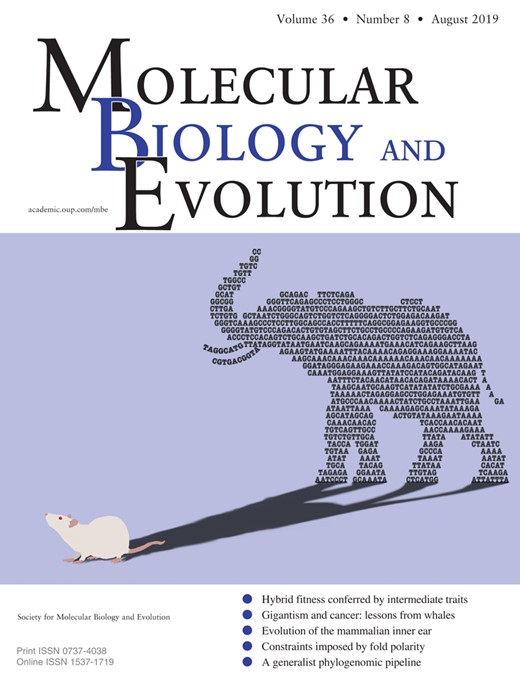-
PDF
- Split View
-
Views
-
Cite
Cite
Yirong Wang, Hong Zhang, Jian Lu, Response to Comment on “microRNAs in the Same Clusters Evolve to Coordinately Regulate Functionally Related Genes”, Molecular Biology and Evolution, Volume 36, Issue 8, August 2019, Pages 1844–1845, https://doi.org/10.1093/molbev/msz121
Close - Share Icon Share
Abstract
Metazoan miRNAs are significantly enriched in clusters. In a previous study (Wang, et al. 2016), we proposed a “functional co-adaptation” model to explain how clustering helps new miRNAs survive and develop functions during long-term evolution. Recently, Marco re-analyzed our data and came to a different conclusion. The major concern Marco raised is whether the observed number of genes targeted by at least two conserved miRNAs with different seeds from the same miRNA clusters is statistically higher than the number obtained under the assumption of randomness. Marco claimed that our approach of shuffling miRNA–target interactions would lead to spuriously low P values. Marco also argued our observation that clustered miRNAs have more common targets than expected is mostly contributed by seeds with similar sequences. However, we found his analyses were conducted in an inappropriate approach and do not refute our model. We also provide new evidences to reaffirm our model.
Metazoan miRNAs are significantly enriched in clusters. Recently, we proposed a “functional co-adaptation” model describing how clustering may help new miRNAs survive and develop functions during evolution (Wang et al. 2016). One supporting discovery is the observed number of genes cotargeted by miRNAs (with different seeds) in the same clusters are significantly higher than expected at random. Recently, Marco raised a series of critiques of our study, and claimed that our observation is mostly contributed by the two seeds in the miR-182/183/96 cluster (Marco 2018). Here, we show that the “functional co-adaptation” still holds after careful examination of Marco’s comments and performing new analyses. We briefly describe our responses as follows, and present the details in bioRxiv (Wang et al. 2018).
The major discrepancy between our analysis and Marco’s lies in the permutation test. Since the cotargeting of genes by multiple clustered miRNAs results from co-evolution between miRNAs and their target sites, in our permutation analysis, we first shuffled the co-expressed seed: target pairing, and then we tested how many genes were targeted by at least two miRNAs (with distinct seeds) in the same clusters. Our results are significant even when the miR-182/183/96 cluster was excluded (Wang et al. 2018). In contrast, Marco shuffled the locations of miRNAs. Marco’s permutation test is biased because we aim to test whether miRNAs (of distinct seeds) from the same cluster have more common targets than expected under randomness, rather than to test whether miRNAs are clustered. Marco also introduced a hypothetical regulatory network and argued that our permutation tests by shuffling miRNA–target inactions would lead to spuriously low P values (Marco 2018). However, the formula he derived for calculating P values produces artificially low P values even when there are no enrichment in common genes targeted by clustered microRNAs. In fact, both our analytical solutions and simulation indicate shuffling miRNA–target interactions would not generate false positive results (please see fig. 3 and Appendix of our bioRxiv article for details).
Notably, both we and Marco only considered the conserved targets (TargetScan PCT > 0.5) in the analyses. When we updated the analysis to include all the optimized target sites with WCC < –0.3, we reaffirmed our conclusion (Wang et al. 2018). Moreover, there is no reason to exclude the miR-182/183/96 cluster since miRNAs in this cluster have experienced convergent evolution, which supports our functional co-adaptation model.
Marco also claimed there is no significant difference in the “fraction of common targets” between clustered and nonclustered miRNAs when the miRNA pairs with <6 common nucleotides in their seeds were examined (Marco 2018). However, this critique is based on an incorrect calculation of the “fraction of common targets” between two miRNAs. The difference is highly significant after correcting his error (P = 0.008, Wang et al. 2018).
Our model of clustered miRNA evolution is supported by functional studies in which we transfected four individual miRNAs in the miR-17∼92 cluster into 293FT cells and quantified transcript abundance with mRNA-Seq (Wang et al. 2016). If there is really “No evidence of functional co-adaptation between clustered microRNAs” as Marco argued, how can one explain these observations?



